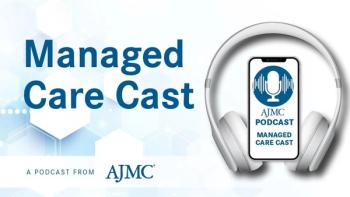
CDC Says US Diabetes Population Tops 30 Million
If there's good news, it's that the rate of increase in number of individuals with diabetes seems to be slowing. But the disease is hitting hardest on the populations with the fewest resources to manage it.
The number of Americans diagnosed with diabetes has topped 30 million and the total living with diabetes or prediabetes exceeds 100 million, according to a
Diabetes, especially type 2 diabetes (T2D), and prediabetes are seen more among the poor, among minorities, among those with less education, and among those living in the South and Appalachia, where several states did not expand Medicaid under the Affordable Care Act.
CDC updates diabetes data approximately every 2 years. This report includes data as of 2015 and finds that 30.3 million Americans, or 9.4% of the population, had diabetes, including both T2D and type 1 diabetes (T1D).
If there’s good news, it’s that the rate of increase seems to be slowing, according to Ann Albright, PhD, RD, director of CDC’s Division of Diabetes Translation. “Diabetes is a contributing factor to so many other serious health conditions,”
While CDC found that 84.1 million people have prediabetes, that figure is down from previous estimates of 86 million. Working with the American Medical Association, Albright has made prediabetes the focus of a massive public health campaign; CDC created the curriculum and recognition process for the
Key findings from the CDC report include:
- In 2015, approximately 1.5 adults receive a new diagnosis of diabetes (aged 18 or older).
- Nearly 1 in 4 adults with diabetes, or 7.2 million people, didn’t know they had the disease. Only 11.6 adults with prediabetes knew they had it.
- The odds of being diagnosed with diabetes increases with age. Only 4% of adults aged 18-44 years had diabetes, but that number jumps to 17% for those aged 45-65 years and leaps again to 25% for those 65 years or older.
- This means 1 out of 4 Americans eligible for Medicare has been diagnosed with diabetes; the actual number is believed to be higher.
The report highlights significant disparities among those with diabetes and prediabetes, including:
- Native Americans and Alaska Natives had the highest rates of diabetes at 15.1% of the population, followed by African Americans at 12.7% and Hispanics at 12.1%. By comparison, 8% of Asians and 7.4% of whites had diabetes.
- Adults with less education are more likely to have diabetes. Rates by level of education were: less than a high school diploma, 12.6%; high school education, 9.5%; some post-secondary education, 7.2%.
- Rates of prediabetes were higher among men (36.6%) than women (29.3%); this split held up across education levels and ethnic groups. The higher rate among men has frustrated those offering the DPP because thus far, the vast majority of those enrolled in the program have been women. Virtual programs, seen as a way to engage more men, were not fully included in the Medicare DPP under a rule proposed last week.
Besides the complications associated with diabetes itself, such as retinopathy and amputations, there is growing evidence of links between diabetes and Alzheimer’s disease—one of the costliest burdens in Medicare and Medicaid. The common thread of insulin resistance runs through both conditions, and preventing T2D is now seen as a way of stopping as least some cases of Alzheimer’s. Right now, 5.5 million people have
Newsletter
Stay ahead of policy, cost, and value—subscribe to AJMC for expert insights at the intersection of clinical care and health economics.













































